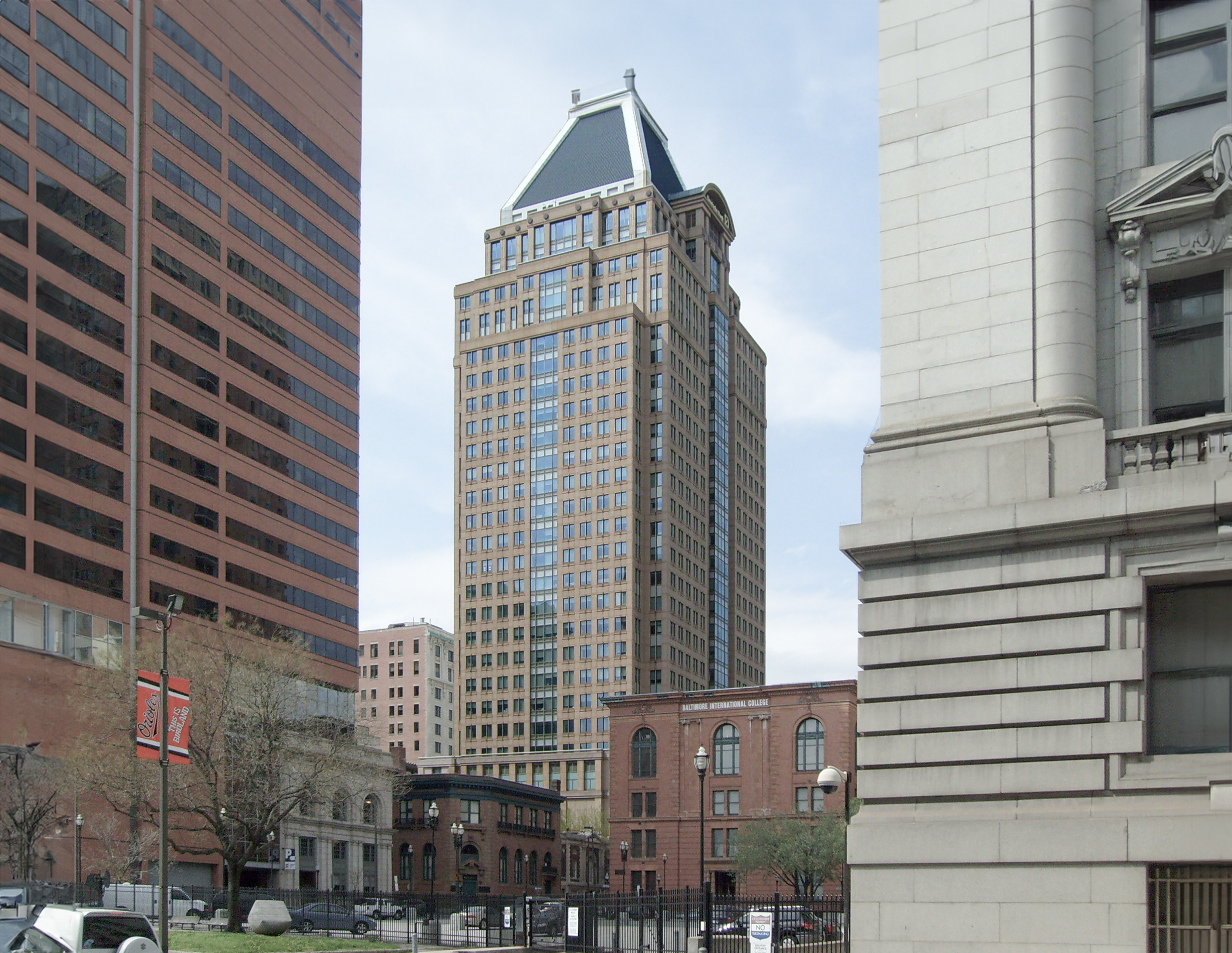The Commerce Place Building is a Postmodernist skyscraper designed by RTKL Associates, with Geraldine Pontius as lead architect, and built in 1992 in Baltimore, MD.
Its precise street address is 1 South Street, Baltimore, MD. You can also find it on the map here.

